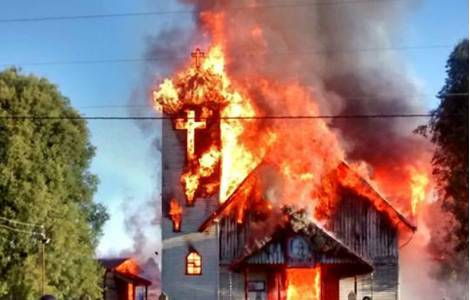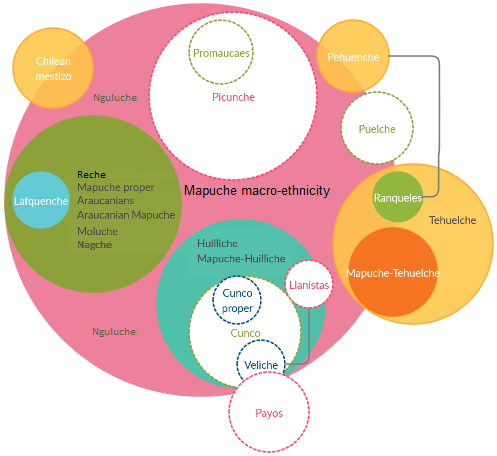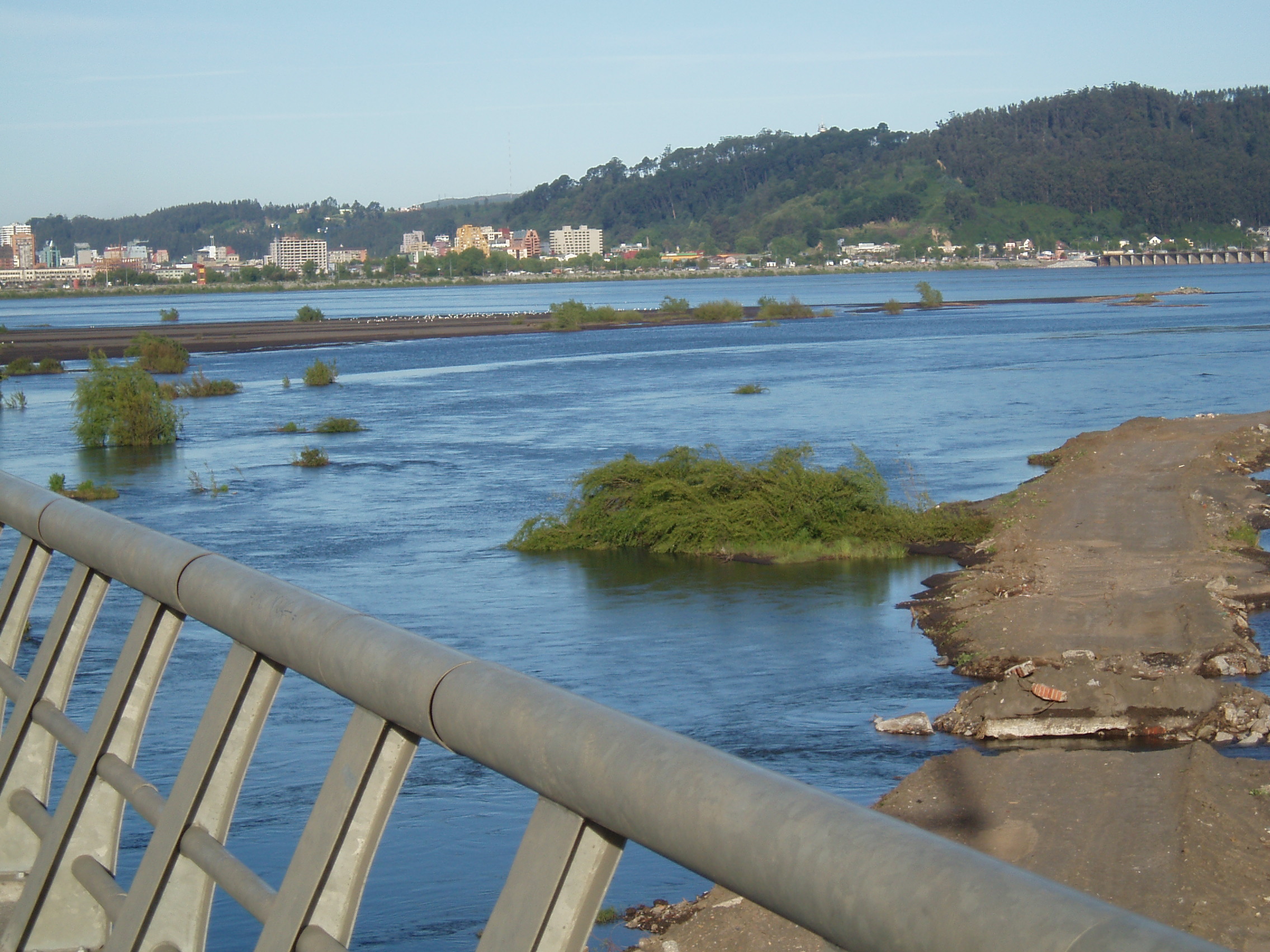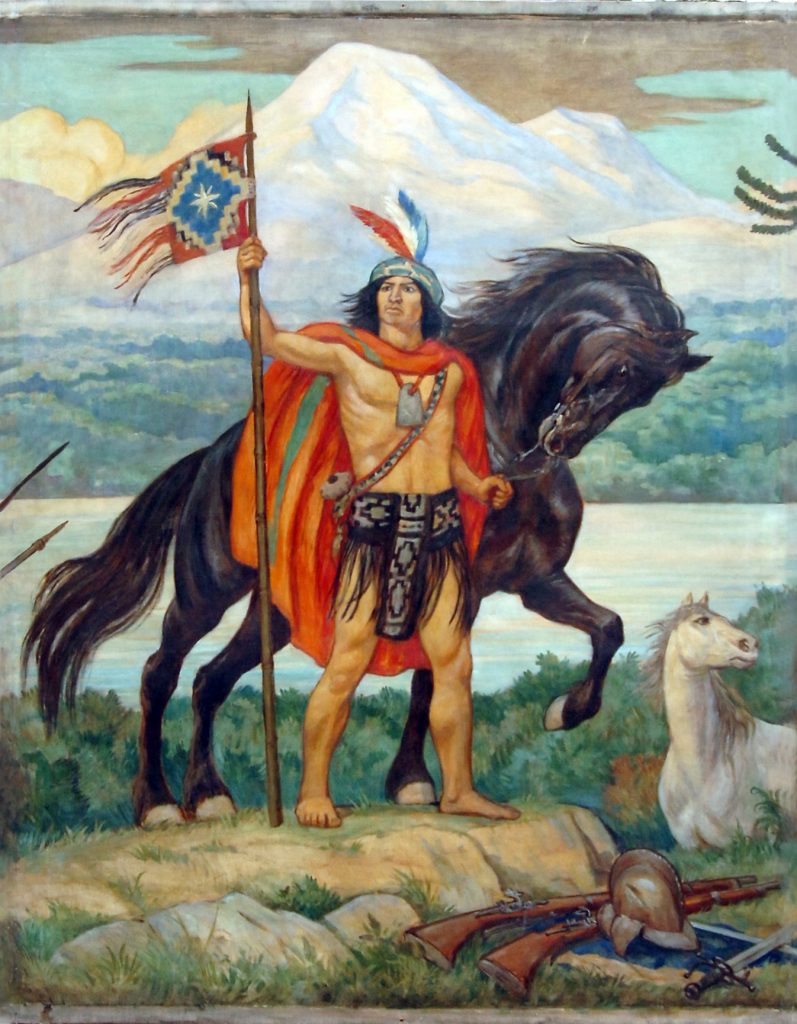|
Araucanía Region
The Araucanía ( ), La Araucanía Region ( ) is one of Chile's 16 first-order administrative divisions, and comprises two provinces: Malleco in the north and Cautín in the south. Its capital and largest city is Temuco; other important cities include Angol and Villarrica. Chile did not incorporate the lands of the Araucanía Region until the 1880s, when it occupied the area to end resistance by the indigenous Mapuche by both military and political means. This opened up the area for Chilean and European immigration and settlement. In the 1900–1930 period, the population of Araucanía grew considerably, as did the economy despite recessions striking the rest of Chile. Araucanía became one of the principal agricultural districts of Chile, gaining the nickname of " granary of Chile". The administrative Araucanía Region was established in 1974, in what was the core of the larger historic region of Araucanía. In the 21st century, Araucanía is Chile's poorest region in t ... [...More Info...] [...Related Items...] OR: [Wikipedia] [Google] [Baidu] |
Regions Of Chile
Chile is divided into 16 regions (in Spanish language, Spanish, ''regiones''; singular ), which are the country's first-level administrative division. Each region is headed by directly elected Regional Governor (Chile), regional governor (''gobernador regional'') and a regional board (''consejo regional''). The regions are divided into Provinces of Chile, provinces (the second-level administrative division), each headed by a governor (''gobernador'') appointed by the President. There are 56 provinces in total. Provinces are divided into Communes of Chile, communes (the third and lowest level administrative division), which are governed by municipal councils. Naming Each region was given a Roman numeral, followed by a name (e.g. ''IV Región de Coquimbo'', read as "fourth region of Coquimbo" in Spanish). When the regional structure was created, Roman numerals were assigned in ascending order from north to south, with the northernmost region designated as I (first) and the southern ... [...More Info...] [...Related Items...] OR: [Wikipedia] [Google] [Baidu] |
Mapuche
The Mapuche ( , ) also known as Araucanians are a group of Indigenous peoples of the Americas, Indigenous inhabitants of south-central Chile and southwestern Argentina, including parts of Patagonia. The collective term refers to a wide-ranging ethnicity composed of various groups who share a common social, religious, and economic structure, as well as a common linguistic heritage as Mapudungun speakers. Their homelands once extended from Choapa River, Choapa Valley to the Chiloé Archipelago and later spread eastward to Puelmapu, a land comprising part of the Pampas, Argentine pampa and Patagonia. Today the collective group makes up over 80% of the Indigenous peoples in Chile and about 9% of the total Chilean population. The Mapuche are concentrated in the Araucanía (historic region), Araucanía region. Many have migrated from rural areas to the cities of Santiago and Buenos Aires for economic opportunities, more than 92% of the Mapuches are from Chile. The Mapuche traditional e ... [...More Info...] [...Related Items...] OR: [Wikipedia] [Google] [Baidu] |
Railroad
Rail transport (also known as train transport) is a means of transport using wheeled vehicles running in railway track, tracks, which usually consist of two parallel steel railway track, rails. Rail transport is one of the two primary means of land transport, next to road transport. It is used for about 8% of passenger and rail freight transport, freight transport globally, thanks to its Energy efficiency in transport, energy efficiency and potentially high-speed rail, high speed.Rolling stock on rails generally encounters lower friction, frictional resistance than rubber-tyred road vehicles, allowing rail cars to be coupled into longer trains. Power is usually provided by Diesel locomotive, diesel or Electric locomotive, electric locomotives. While railway transport is capital intensity, capital-intensive and less flexible than road transport, it can carry heavy loads of passengers and cargo with greater energy efficiency and safety. Precursors of railways driven by human or an ... [...More Info...] [...Related Items...] OR: [Wikipedia] [Google] [Baidu] |
Biobío River
The Biobío River (also known as Bío Bío or Bio-Bio) is the second largest river in Chile. It originates at Icalma and Galletué lakes in the Andes and flows to the Gulf of Arauco (in Spanish) on the Pacific Ocean. The major tributaries of the river are the Malleco and the Laja. The river is Chile's second-longest river (the longest being the Loa River) and the Biobío basin is Chile's third largest watershed, after the Loa and Baker basins. The river is also the widest river in Chile, with an average width of . In the Metropolitan area of Concepción, four bridges cross the river: Biobío Railroad Bridge (1889), Juan Pablo II Bridge (1973), Llacolén Bridge (2000) and Bicentennial Bridge (2010). Course The Biobío River originates at the east shore of Galletué Lake. The river flows east for a few kilometers to the point where it receives the waters of the nearby Icalma Lake, through a short stream. It then turns its course northwestward, meandering through a broad ... [...More Info...] [...Related Items...] OR: [Wikipedia] [Google] [Baidu] |
Spanish Empire
The Spanish Empire, sometimes referred to as the Hispanic Monarchy (political entity), Hispanic Monarchy or the Catholic Monarchy, was a colonial empire that existed between 1492 and 1976. In conjunction with the Portuguese Empire, it ushered in the European Age of Discovery. It achieved a global scale, controlling vast portions of the Americas, Africa, various islands in Asia and Oceania, as well as territory in other parts of Europe. It was one of the most powerful empires of the early modern period, becoming known as "the empire on which the sun never sets". At its greatest extent in the late 1700s and early 1800s, the Spanish Empire covered , making it one of the List of largest empires, largest empires in history. Beginning with the 1492 arrival of Christopher Columbus and continuing for over three centuries, the Spanish Empire would expand across the Caribbean Islands, half of South America, most of Central America and much of North America. In the beginning, Portugal was ... [...More Info...] [...Related Items...] OR: [Wikipedia] [Google] [Baidu] |
Inca
The Inca Empire, officially known as the Realm of the Four Parts (, ), was the largest empire in pre-Columbian America. The administrative, political, and military center of the empire was in the city of Cusco. The History of the Incas, Inca civilisation rose from the Peruvian highlands sometime in the early 13th century. The Portuguese explorer Aleixo Garcia was the first European to reach the Inca Empire in 1524. Later, in 1532, the Spanish Empire, Spanish began the conquest of the Inca Empire, and by 1572 Neo-Inca State, the last Inca state was fully conquered. From 1438 to 1533, the Incas incorporated a large portion of western South America, centered on the Andes, Andean Mountains, using conquest and peaceful assimilation, among other methods. At its largest, the empire joined modern-day Peru with what are now western Ecuador, western and south-central Bolivia, northwest Argentina, the southwesternmost tip of Colombia and Incas in Central Chile, a large portion of modern- ... [...More Info...] [...Related Items...] OR: [Wikipedia] [Google] [Baidu] |
Mapuche People
The Mapuche ( , ) also known as Araucanians are a group of Indigenous inhabitants of south-central Chile and southwestern Argentina, including parts of Patagonia. The collective term refers to a wide-ranging ethnicity composed of various groups who share a common social, religious, and economic structure, as well as a common linguistic heritage as Mapudungun speakers. Their homelands once extended from Choapa Valley to the Chiloé Archipelago and later spread eastward to Puelmapu, a land comprising part of the Argentine pampa and Patagonia. Today the collective group makes up over 80% of the Indigenous peoples in Chile and about 9% of the total Chilean population. The Mapuche are concentrated in the Araucanía region. Many have migrated from rural areas to the cities of Santiago and Buenos Aires for economic opportunities, more than 92% of the Mapuches are from Chile. The Mapuche traditional economy is based on agriculture; their traditional social organization consists of ... [...More Info...] [...Related Items...] OR: [Wikipedia] [Google] [Baidu] |
Mapuche Conflict
The Mapuche conflict () involves indigenous Mapuche communities, known by the foreigners as the Araucanians, located in Araucanía and nearby regions of Chile and Argentina. The first attack, marking the beginning of the period of violence in the Southern Macrozone of Chile, occurred in December 1997 with the burning of three trucks. Since then, violence has progressively increased and expanded to the neighboring regions of Biobío and Los Lagos. The conflict itself is related to the land ownership disputes between Argentina and Chile since the 19th Century as well as corporations such as big forestry companies and their contractors. In the past decade of the conflict, Chilean police and some non-indigenous landowners have been confronted by indigenist militant Mapuche organizations and local Mapuche communities in the context of the conflict. Some scholars argue the conflict is an indigenous self-determination conflict; others like Francisco Huenchumilla see it as the ex ... [...More Info...] [...Related Items...] OR: [Wikipedia] [Google] [Baidu] |
World Bank
The World Bank is an international financial institution that provides loans and Grant (money), grants to the governments of Least developed countries, low- and Developing country, middle-income countries for the purposes of economic development. The World Bank is the collective name for the International Bank for Reconstruction and Development (IBRD) and International Development Association (IDA), two of five international organizations owned by the World Bank Group. It was established along with the International Monetary Fund at the 1944 Bretton Woods Conference. After a slow start, its first loan was to France in 1947. In its early years, it primarily focused on rebuilding Europe. Over time, it focused on providing loans to developing world countries. In the 1970s, the World Bank re-conceptualized its mission of facilitating development as being oriented around poverty reduction. For the last 30 years, it has included NGOs and environmental groups in its loan portfolio. Its ... [...More Info...] [...Related Items...] OR: [Wikipedia] [Google] [Baidu] |
Central Bank Of Chile
The Central Bank of Chile () is the central bank of Chile. It was established in 1925 and is incorporated into the current Chilean Constitution as an autonomous institution of constitutional rank. Its monetary policy is currently guided by an inflation targeting regime. History Starting in the mid-19th century, private banks started to thrive in Chile, spurring growing concerns over the control of payment methods and persistent inflation. To this end, the government hired a mission led by economics professor Edwin Kemmerer of Princeton University and based the nascent central bank's structure in one of the mission proposals. In August 1925, the Central Bank of Chile (CBoC) was created through Decree Law 486, which also established the bank's monopoly for issuing bank notes under a gold standard regime. A degree of independence to avoid capture by the public or private sectors was implicit in its ten-member board structure. [...More Info...] [...Related Items...] OR: [Wikipedia] [Google] [Baidu] |
GDP Per Capita
This is a list of countries by nominal GDP per capita. GDP per capita is the total value of a country's finished goods and services (gross domestic product) divided by its total population (per capita). Gross domestic product (GDP) per capita is often considered an indicator of a country's standard of living; however, this is inaccurate because GDP per capita is not a measure of personal income. Measures of personal income include average wage, real income, median income, disposable income and GNI per capita. Comparisons of GDP per capita are also frequently made on the basis of purchasing power parity (PPP), to adjust for differences in the cost of living in different countries, ''see'' List of countries by GDP (PPP) per capita. PPP largely removes the exchange rate problem but not others; it does not reflect the value of economic output in international trade, and it also requires more estimation than GDP per capita. On the whole, PPP per capita figures are more narrowly spre ... [...More Info...] [...Related Items...] OR: [Wikipedia] [Google] [Baidu] |






